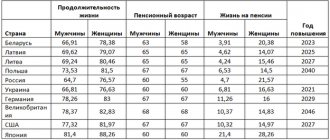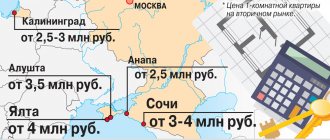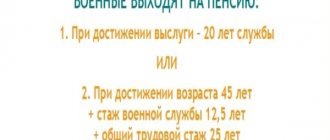Pension indexation table until 2024
We have already talked about the increase in pensions from January 2020 in previous videos. Today we will look at the results of January indexation in Russia, as well as what amounts await us in the future.
So, in January, the Pension Fund paid new pension amounts for all non-working pensioners. The increase was 7.05%. For each, the increase was different depending on the previous size of payments.
For channel subscribers, we sent an indexation table depending on the size of the pension received. Let us recall that according to the latest data from the Pension Fund of Russia, the average amount of old-age payments in 2018 was 14,414 rubles. It was based on calculations of this amount that they promised an increase of a thousand rubles. In fact, only those who received amounts greater than the average received an increase of a thousand rubles.
In order to check the correctness of the indexation, you simply need to multiply the previous size by a factor of 1.0705. For example, a pension of 8215 rubles after indexation will increase to 8794 rubles.
Let's look at the results of the January increase in our regions. If in Russia the average old-age pension has become 15,430 rubles since 2020, then in individual regions its size differs.
For example, according to the official website of the Pension Fund of Russia since 2020, the average old-age insurance pension since 2020 in the Kostroma region has been 14,298 rubles. In the Magadan region 22,480 rubles. Karelia reports an average old-age payment of 17,232 rubles. Bryansk region 14588. Krasnodar region 16257. Tyumen region 15490. Sverdlovsk region 15656 rub. In Mari El it is 12975. In the Nizhny Novgorod region it is 14437. In Adygea it is 12859. In Moscow, the average old-age pension has become 15329 rubles since 2020, and in the Moscow region it is 15323 rubles. Unfortunately, there are no complete statistics for all regions.
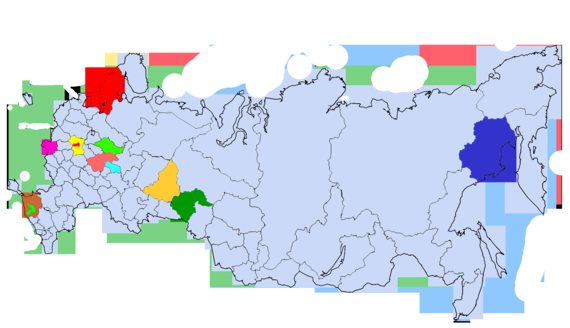
One more nuance regarding indexing. Never before have indexation percentages been set for years in advance. Now, with the adoption of Law No. 350-FZ, we know in advance the exact size of the increase in the insurance pension until 2024.
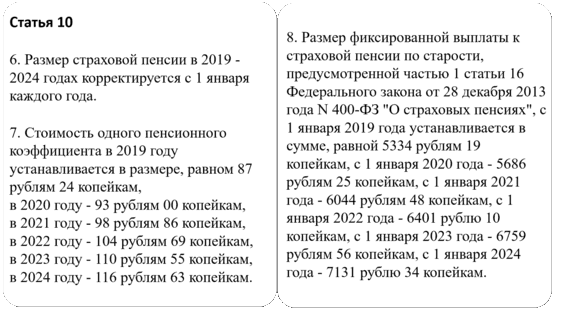
Let's supplement our first table with the approved indexation coefficients for 2020, 2021, 2022-23 and 2024.
Now every pensioner can find out in advance their size of future payments for the coming years. To do this, you need to multiply your pension amount by the specified coefficients one by one.
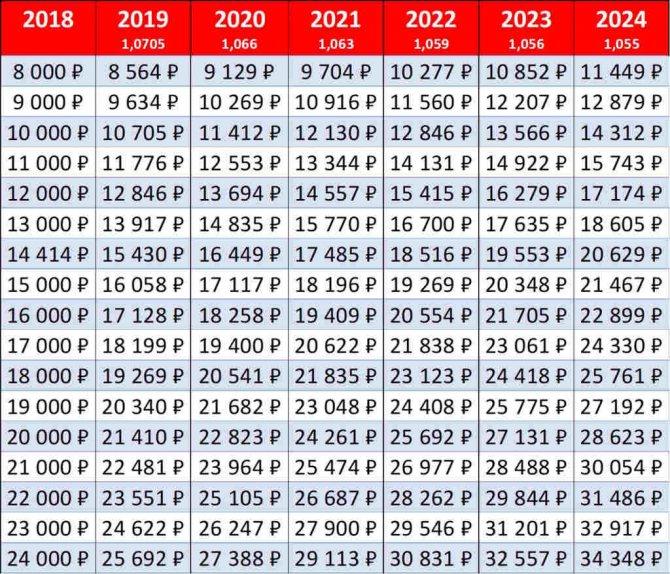
For example, the disability pension in 2020 is equal to 9,634 rubles. We multiply it by the indexation coefficient in 2020 of 1.066 and get the amount of 10,269 rubles. Next, we multiply this amount by the next year’s coefficient. And we get the amount of our payment in 2021 - 10 thousand 916 rubles. And so on. In 2024, the amount will already be 12,879 rubles. Try calculating your pension yourself to find out about future payments.
Let's also look at the three main reasons why you may not receive pension indexation from January:
- You receive a state pension. (Only insurance companies are indexed in January, while government ones are indexed in April of each year.)
- You are a working pensioner. (from 2020, no indexation is paid to pensioners who continue to work).
- You are the recipient of a social supplement up to the subsistence level of a pensioner. (If after indexation the total amount of income does not exceed the cost of living of a pensioner in the region, then you will not notice a real increase). The cost of living for 2019 by region was also sent to our channel subscribers.
That's all. Subscribe to the channel to know a little more about pensions than your neighbors.
Indexing in a new way
In June 2020, Anton Siluanov, the Minister of Finance of the Russian Federation, announced that in the future the average pensions of Russians should increase to 20,000 rubles. The date when payments would reach this level was set at 2024. But the main condition for such growth was the implementation of a pension reform, providing for an increase in the age of retirement.
Quote : “In general, we are talking about the need to achieve the level of pension for the period until 2024, to reach the level of about 20 thousand rubles of pension,” - A. Siluanov.
The speech also said that the increase in pension payments will occur due to the growth of individual pension capital.
However, in July, during a speech at a meeting of the tripartite commission for regulating social and labor relations, Tatyana Golikova, Deputy Prime Minister, announced a new approach to pension indexation, according to which payments should increase by 1,000 rubles already in January 2020. per month or 12,000 rubles. in year.
This dynamic should continue throughout the transition period, which will ensure an increase in payments to the level of 20,000 rubles.
The officials' promises sounded like a statement of increased well-being of pensioners. But many analysts and oppositionists doubted the availability of real calculations and funds in the budget to ensure such an increase in payments.
During a discussion of the reform in the State Duma, Maxim Topilin, the Minister of Labor, officially stated that one of the goals of the reform is to bring pensions to the level of 20,000 rubles in 6 years. The official assured that the calculations “are not a secret.”
In support of the Government’s words, the Pension Fund of Russia published in September 2020 on its official website the main indicators of the Pension Fund budget for 2019–2021, according to which the average pension should reach the level of 20,000 rubles by 2024.
The Ministry of Labor confirmed that “all positions from a financial point of view will be included in the formation of the budget of the Pension Fund and the federal budget.” Relevant documents, including those including amendments announced by Putin to soften the pension reform, will be submitted to the State Duma for consideration before October 1, 2020.
Related video:
Promotion deadlines
As the Government promised, the first indexation of pension payments will be carried out in January 2020. The average pension will be increased by 1,000 rubles, which in relative terms will be 7.05%.
This trend will continue for the next 6 years. Every year in January, an amount of RUB 1,000 will be added to payments. As a result, in 2020 the size of the labor pension of non-working pensioners will increase to 15.4 thousand rubles.
If this trend continues until 2024, a gradual increase in pensions to 20 thousand is planned.
Who will have their pensions increased?
Non-working pensioners are named as the main recipients of the increased bonus. It is for this category of citizens that payments will be recalculated automatically without application. Unfortunately, the innovation does not apply to working pensioners and people receiving social benefits.
Indexation of insurance payments for working pensioners has been frozen since 2016. According to politicians, the income growth of this category of Russians is faster than the average. Therefore, as part of the ongoing reform, the issue of resuming the indexation of insurance payments is not being considered.
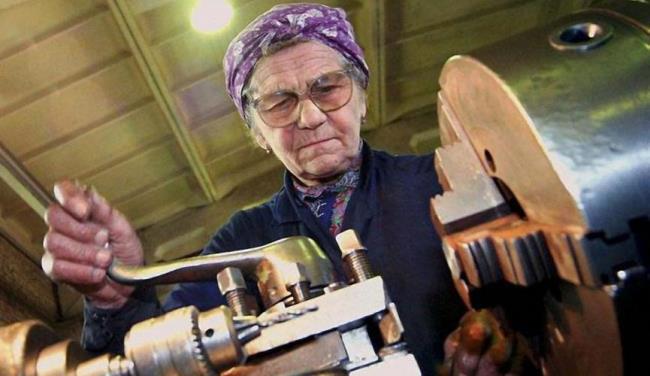
Rice. 3. Working pensioners will not receive January bonuses
The only way to receive all the pension supplements is to retire. In this case, the very next month after contacting the Pension Fund, the pensioner’s payments will be recalculated and the amounts of all indexations carried out in previous periods will be added.
For reference! Indexation of social pension payments is scheduled for April 1. In 2020, the average annual amount will increase to RUB 9,215. by increasing the cost of living of pensioners by 2.4%.
Summary
To summarize, I would like to note that the increase in pensions, which the government is so proud of, is only compensation for losses from inflation. It turns out that increasing the retirement age will practically not improve the standard of living of current pensioners.
At least in the next 5 years, no significant changes can be expected. And we should not forget that the price of such an “increase” was an increase in the retirement age by as much as 5 years, which in a country with a low life expectancy is a serious blow to the population as a whole.
Why pensioners have become more active in checking their pension affairs (more details here).
Thank you for attention!
Who will retire early in 2021
Along with the increase in the retirement age for the majority of Russians, for some categories of citizens it was left the same, or even new relaxations were introduced.
So, they can retire according to the previous rules
the following categories:
- those employed in jobs with hazardous working conditions;
- those employed in heavy work - in transport, mining, rescuers, sailors, etc.
There are still benefits for early retirement for a number of other professions - for example, doctors, teachers, cultural workers
can retire with 25-30 years of experience in the profession. However, starting from 2020, a deferment will be introduced for them - that is, you can retire with a special preferential length of service not immediately upon availability, but after some time.
In 2019 it was six months, in 2020 – one and a half years (taking into account the “benefit” of 6 months), but those who accumulate the necessary preferential service in 2021 will be able to retire only after 3 years. In this case, it does not matter whether the person will work during these 3 years - the point is precisely the deferment.
Special rules remain for residents of the Far North
and equivalent areas - for them the retirement age is gradually increasing by 5 years, but it is still 5 years less than for residents of the rest of Russia. And if a person worked for some time in the Far North, his retirement age is reduced by 4 months for each year of work.
Read also: Pensions could be a third higher: Kudrin told how the retirement age was almost raised in 2008 1
And representatives of the indigenous small peoples of the North
can retire according to the old rules - at 50 and 55 years old.
In addition, new grounds for early retirement were introduced:
- service of at least 37 years for women and 42 years for men reduces the retirement age by 2 years (but even during the transition period it will not be possible to retire earlier than 55/60 years). Moreover, such length of service does not include studies, military service and many other non-insurance periods;
- women who have raised 3 or more children can retire earlier. If there are three children, then for 3 years, if there are four, then for 4 years, and if there are 5 or more children, then, as before, at 50 years. To retire, you must have at least 15 years of insurance experience (and for child care you can get no more than 6 years of experience in total);
- pre-retirees can still retire 2 years earlier if they were laid off from work and no new job was found.
Pensions of citizens who work
The authorities linked the increase in the retirement age to an increase in pension benefits above the rate of inflation, but the June legislative draft made no mention of increasing pensions. The State Duma Committee on Labor and Social Policy made a conclusion in which it called: “to legislatively establish regulations for the growth of insurance benefits for pensioners at a rate that exceeds inflation.”
In turn, the President of the Russian Federation, in an address to citizens at the end of August, promised to include in the legislative draft a mechanism for the annual increase in pension provision.
It follows from the President’s initiative that pensions of pensioners still working, not indexed since 2020, will increase in subsequent years in the same way as pensions of non-working citizens.
In the reverse situation, a special clause would be required that the values of the SPB and fixed payment for the period from 2020 to 2024 do not apply to pensioners who are still working.






